The abandonment rate in the financial industry can be reduced — but only by addressing the underlying causes and redesigning digital experiences with real user needs in mind.
The invisible friction: how minor technical obstacles trigger abandonment in digital onboarding

User abandonment in a digital onboarding process doesn’t always occur at the final step. In many cases, users get lost midway—at an intermediate step—without leaving a trace. Even though digital onboarding processes have gradually improved, the abandonment rate often fails to stabilise and even increases when less obvious friction points are not detected and addressed.
Abandonment can occur at any stage of the digital onboarding journey
T
hese aren’t always major failures. Often, it’s the minor things that push a user to close the window: a confusing instruction, a vague error message, an unclear mandatory field or a validation that won’t progress. All of these constitute invisible friction that rarely shows up in internal metrics, but is present, click after click.
The outcome is clear: each micro-obstacle lowers the likelihood of conversion and lets a potentially willing user drop out. This occurs in sectors as varied as banking—where doubts during identity verification can halt account creation; in healthcare—where a technical form might prevent a patient from completing their registration; or in public services—where unclear steps can block access to essential procedures. The challenge lies in detecting these frictions before it’s too late.
What is invisible friction?
Invisible friction refers to obstacles that, while not technically breaking the digital onboarding process, undermine its fluency and comprehensibility. These are elements that slow down, confuse or frustrate users without triggering an obvious system error.
Some common examples include:
- Poorly explained or illogical mandatory fields
- Vague error messages without resolution guidance
- Excessively long forms that don’t split content into steps
- Invasive CAPTCHAs or unintuitive validation steps
- Interfaces that fail to detect the user’s language or provide accessible navigation
These micro-frictions may not stand out during internal reviews, but from the user’s perspective, they can be decisive, causing them to abandon the process and never return.
Impact on abandonment rate: what goes unseen still matters
These silent exits often follow a series of small interruptions or unresolved doubts. That’s why it’s essential to observe metrics beyond whether a user completed or failed a process: time spent on each screen, repeated actions, back-clicks, and recurring abandonment points all offer key insights.
Identifying these patterns helps uncover recurring issues that traditional reporting may miss—but which directly affect the overall performance of digital onboarding.
The performance onboarding approach
What happens if, at the moment of friction, the user is offered an alternative route tailored to their context? That’s the premise of alternative onboarding: offering adapted pathways that allow the user to continue without leaving the experience.
Performance onboarding (aka alternative onboarding or onboarding to success) introduces flexible layers that activate depending on the user’s context, needs, or specific friction points. It’s not about redesigning the entire process, but about offering mechanisms to continue from the very moment the obstacle arises.
In this paradigm, TrustCloud functionalities provide tangible solutions that integrate naturally into the flow:
- HelpMe Button: instant support when a user stops or becomes inactive
- Audio Assistance: voice-based guidance for users who struggle with written interfaces
- Translation options: real-time multilingual support for screen instructions or conversations with agents
- Reusable Identity: avoids repeating identity checks previously completed with other services
These tools not only address critical points—they help prevent abandonments that would otherwise be unavoidable.
Examples of resolved micro-frictions
The following cases show how invisible friction can become a recovery opportunity using specific alternative onboarding features:
- Case 1: An automated process for identity verification on mobile repeatedly fails with messages like “verification failed” or “try again later”, providing no explanation or guidance. Unable to proceed, the user clicks the HelpMe Button. This transfers the process from unassisted to assisted mode, allowing an agent to guide them in real time via video call—without restarting or abandoning the process.
- Case 2: A complex interface with difficult text and poor navigation causes repeat abandonments among non-native speakers. After a period of inactivity, Audio Assistance or Simultaneous Translation activates, helping the user continue with spoken instructions in their preferred language.
- Case 3: Reading a complex legal document while signing up for a financial product prevents progress. The system triggers JurixAI, which summarises and validates key parts of the document, offering a simplified and legally equivalent version.
Ready to reduce abandonment in your digital onboarding flows? Contact us and learn how to activate the right support at the right time
In each case, what could have led to abandonment turns into a successfully completed experience.
Understanding invisible friction to activate tailored solutions
Reducing abandonment rates is not simply a matter of shortening forms or redesigning interfaces. It’s primarily an exercise in empathy and close observation. Invisible friction reminds us that behind every automated process are users with varying levels of understanding, confidence, urgency and context.
When these nuances are ignored, even technically sound processes can fail. On the other hand, recognising them and implementing timely mechanisms—like those offered by alternative onboarding—results in better experiences, more engagement and higher completion rates.
Looking beyond the standard flow and addressing those silent pain points is now a clear competitive advantage. Conversion is no longer determined solely by design, but by the ability to anticipate abandonment without disrupting the experience. That’s where digital onboarding becomes effective digital inclusion.
Speak to a TrustCloud expert and learn more about our Performance Onboarding project
























